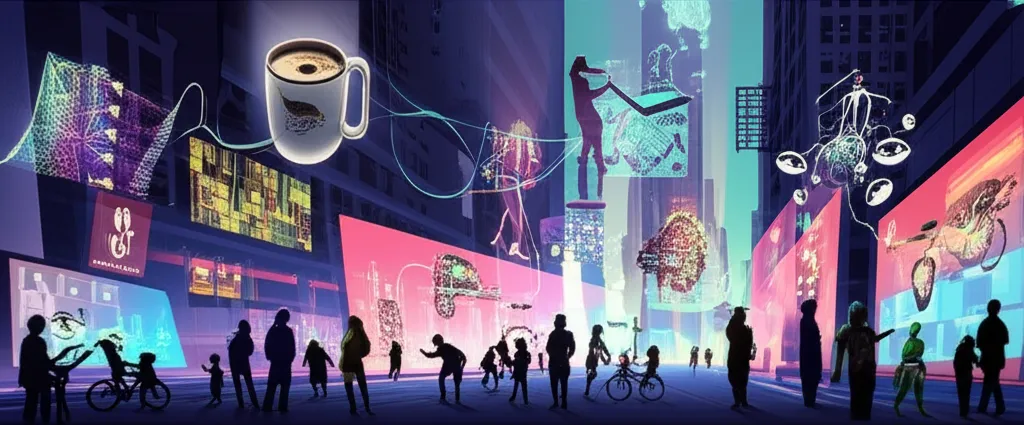When I first saw an AI-powered quiz give instant feedback in my daughter's virtual classroom, I was floored. It felt like education had leapt into the future overnight. But soon, whispers of AI surveillance and student data privacy started surfacing at parent-teacher meetings, and the excitement became more complicated. Is AI making learning smarter or just sneakier? Let's dig into the quirks and quandaries of AI in today's schools, where smart tutors and watchful algorithms sometimes blend into the same interface.
Personalized Learning: The Promises and Hidden Pitfalls of Smart Tutors
As a parent and blogger closely following AI in education, I’ve seen firsthand how AI tutoring systems are changing the classroom. My own son, who once struggled with math, recently aced his exams thanks to a smart tutor that adapts to his learning pace. This technology didn’t just drill him with endless problems—it analyzed his strengths and weaknesses, offering personalized feedback and adjusting the difficulty in real time. The results were hard to ignore: higher grades, more confidence, and a genuine interest in learning.
These AI personalized learning platforms promise a lot. They claim to:
Boost student engagement through interactive, tailored lessons
Improve learning outcomes with instant, individualized feedback
Identify gaps in understanding and adapt content accordingly
It’s not just my family benefiting. As AI tutoring systems become more affordable, they’re appearing in more schools and homes. The AI education market is projected to skyrocket—from $7.57 billion in 2025 to $112.30 billion by 2034. This surge means more students will have access to adaptive learning tools that were once out of reach.
But there are hidden pitfalls. While my son’s grades improved, I noticed he spent less time interacting with his teacher and classmates. The smart tutor became his go-to for questions, sometimes at the expense of human connection. This raises a critical concern: Are we trading personal relationships for algorithmic efficiency?
Another worry is over-reliance on algorithms. When students depend too much on AI, they may lose important problem-solving and social skills that come from working with peers and teachers. And while these systems promise transparency, it’s often unclear how decisions are made. What if the algorithm misjudges a student’s needs or reinforces biases?
“AI tutoring systems improve student engagement and outcomes, but we must stay alert to the risks of overdependence and reduced human connection.”
In my experience, the benefits of smart tutors—like adaptive support and improved outcomes—are real. But as AI in education becomes the new norm, we need to ask tough questions about transparency, balance, and the true role of technology in our children’s learning journeys.
Surveillance or Safety? The Double Life of AI in Classrooms
When I first heard about AI surveillance tools in classrooms, I thought they were just another way to keep students honest during exams. But then a friend shared her daughter’s experience: she was flagged for “suspicious behavior” during a remote test, even though she hadn’t done anything wrong. Sadly, her story isn’t unique. As AI in classrooms becomes more common, so do these incidents—and the questions they raise about privacy, fairness, and trust.
AI surveillance in schools is now a global phenomenon. These tools don’t just check if students are present; they monitor screen activity, track eye movements, and even analyze facial expressions. The goal is to protect academic integrity, but the reality is far more complicated. When an AI system misinterprets a student’s nervous habit or a technical glitch as cheating, it can lead to unfair disciplinary actions. This is one of the most common criticisms: algorithmic bias concerns are real, and they can have lasting effects on students’ records and confidence.
Here’s what these AI surveillance tools typically monitor:
Attendance and participation
Screen and browser activity
Audio and video feeds for suspicious sounds or movements
Facial expressions and gaze direction
While the intention behind AI surveillance in schools is to create a safe and honest learning environment, the side effects are hard to ignore. Many students feel like they’re being watched constantly, which can undermine trust between them and their teachers. Privacy breaches are another risk—especially when sensitive data is stored or analyzed by third-party companies.
Another major issue is AI surveillance ethical issues. Who decides what counts as “suspicious”? If an AI system is trained on biased data, it might unfairly target certain students based on their behavior, appearance, or even their background. These algorithmic bias concerns aren’t just theoretical—they’re happening right now in schools around the world.
Some schools are starting to recognize these problems. They’re working on fair and transparent policies to make sure AI surveillance tools are used responsibly. This includes clear guidelines on what data is collected, how it’s used, and how students can challenge unfair decisions. As we rethink the new classroom norm, it’s clear that balancing safety and privacy is more important than ever.
Ethical Crossroads: Drawing the Line Between Support and Surveillance
As I reflect on the growing presence of AI in our classrooms, I see teachers stepping into a new dual role—part mentor, part digital lifeguard. This shift brings both opportunities and challenges, especially when it comes to the ethical implications of AI in education. While smart tutors promise personalized support, they also raise tough questions: Are we empowering students, or are we watching them too closely?
The ethical implications of AI education are front and center in today’s debates. Transparency is a major concern. Students and parents deserve to know how AI systems collect, analyze, and use data. Yet, many AI tools operate as black boxes, making it hard to understand their decisions or correct their mistakes. Privacy is another pressing issue. With AI tracking everything from learning habits to emotional responses, the line between helpful guidance and intrusive surveillance can blur quickly.
Teachers now find themselves navigating these ethical crossroads. They must balance the promise of AI-powered support with the responsibility to protect students’ rights. In this new landscape, educators are not just guides for academic content—they are also stewards of digital ethics, helping students understand both the benefits and the risks of AI.
Digital equity is another stubborn challenge. The promise of AI in education will only be realized if all students have equal access to these tools. Unfortunately, gaps in digital access and resources mean that some learners are left behind, deepening existing inequalities. Addressing these digital equity gaps is essential for the responsible use of AI in schools and for ensuring that AI-driven support does not become another form of surveillance for the most vulnerable.
Regulations and educational policies are slowly evolving to address these concerns, but they often lag behind the rapid pace of technology. As a result, teachers, administrators, and policymakers must work together to develop clear guidelines that prioritize transparency, privacy, and fairness. The ethical implications of AI demand that we move beyond simple adoption and toward thoughtful, responsible use.
As we rethink the new classroom norm, it’s clear that AI is here to stay. But the way we draw the line between support and surveillance will define not just the future of education, but the trust we build with our students. The path forward requires vigilance, empathy, and a commitment to digital equity and ethical responsibility at every step.



